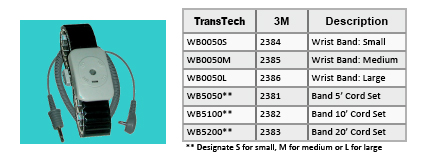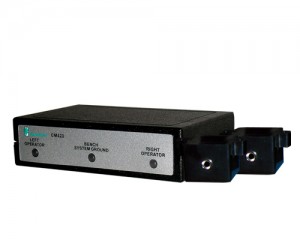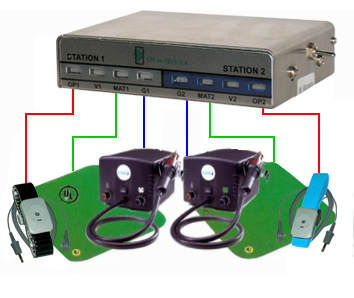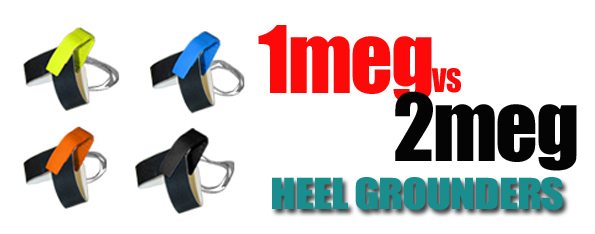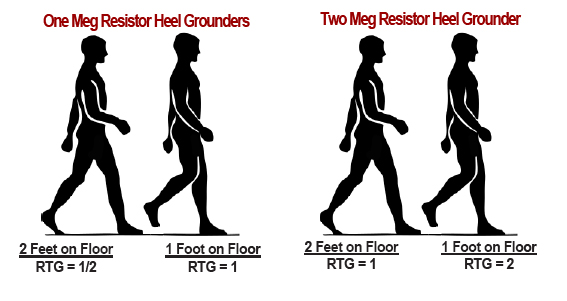The following article was written by Tom Watkins, President of Transforming Technologies. The full article can be found here. For more information, please view Cleanroom Air Ionization in a Nano World a presentation prepared by Dr. Larry Levitt of LBL Scientific that discusses Alpha Ionization.
Introduction
As semiconductor fabrication moves to the 25 nm node, ultrafi�ne particles (those under 100 nm) generated by and on corona emitter points now pose a threat to manufacturing. Corona ionizers employ high voltages to emitter point(s) to create an ion current. Cleanroom corona ionizers can be very eff�ective at controlling a wide range of static related issues in semiconductor fabrication, but corona ionizers create micron, sub-micron and deep sub-micron particlesi.
Alpha ionization is an inherently clean and balanced technology that eliminates all particle concerns associated with corona ionization. Alpha technology eliminates airborne molecular contamination (AMC) particle agglomeration risks caused by corona ionizers.
AlphaBoostâ„¢ bipolar ionization systems significantly enhance the �effective range of P-2042 alpha sources (NRD, Inc.)and off�er a practical alternative for static control in ultraclean manufacturing environments. Alphaboostâ„¢ uses self-contained, pulse DC �fields to repel ions rapidly away from the alpha source. The Alphaboostâ„¢ system variable frequency control provides excellent static protection, in multiple con�gurations.
 | |
Alphaboostâ„¢ electronically-enhanced Alpha ionizer | Contamination on the tip of a Corona ionizer |
Background
Signi�cant work has been done to study the mechanisms by which corona ionizers create particlesii. A variety of theories have been put forward on the subject. In summary, there are two dominant mechanisms, both related to the corona process itself. These processes are both a direct consequence of the energy density associated with the intense electric �field required to create the ions. The emitter points of a corona ionizer must be quite sharp and the plasma created in the atmosphere immediately adjacent to the tip is characterized by a very high temperature.
In the fi�rst process, high temperature eff�ects the physical integrity of the emitter point material and emitter material is sloughed offiii,iv�.� Emitter sloughing is currently reduced in cleanroom corona ionizers by optimization of the corona emitter point shape and material and applied voltages. These design subtleties lower the temperature of the plasma.
The second process involves the interaction of the corona plasma with airborne molecular contaminants in the cleanroom air. There are many solvents whose vapors become dissolved in the atmosphere and are referred to as AMCs. For example, hexamethyldisilazane (HMDS) is a large molecule used as a wetting agent in the photolithography process. It is well known that ionizers require much more frequent cleaning in a litho bay, but it is less well realized that additional particles are released from corona ionizer points into the cleanroom.
Any AMCs which pass through the corona region will react and agglomerate into small particles which are attracted to the emitter points by the dielectrophoretic force. When the particles contact the tip, some undergo charge exchange and are repelled into the cleanroom. Moving to a broader emitter tip made up of material which has good thermal conductivity lowers the temperature of the plasma and reduces the size of the agglomerated particles. In our experience, it makes the majority of them smaller than can be measured with a conventional laser particle counter. However, they still exist, and can be measured using a condensation nucleus counter. Today, these very small (<100 nm) particles are comparable to or larger than the feature size on modern semiconductors (CD~25 nm). Alpha ionizers utilize polonium 210 (Po210), a naturally occurring element in the soil, plants, vegetables, etc. The source emits 5.3 MeV alpha particles. The alphas move� through the air colliding with air molecules as they go. Each time they collide, they give up some of their energy by ionizing the molecules they strike. On the average, each alpha particle travels 3 cm though the air and creates hundreds of thousands of ion pairs along its path before it stops.
At that point, the alpha particle picks up two electrons and becomes a helium atom, and drifts up through the atmosphere. There is no corona, no plasma and no agglomeration. There are no emitter tips to wear. There are no plasma regions and hence no agglomeration of AMCs. The process is inherently clean.
AlphaBoostâ„¢ bipolar ionization systems utilize clean, alpha ionization technology and extends the eff�ective range by employing low intensity electric �fields to move the ions rapidly away from the alpha source and into the laminar �flow of the cleanroom. The nominal, variable pulsed voltage propel the ions and enables the alpha source to provide reliable protection at up to a meter in distance. AlphaBoostâ„¢ is designed to provide an ionizer which is safe, clean and requires NO maintenance for a full year.
i M. Blitshteyn and S. Shelton Contamination and erosion of cleanroom air ionizer emitters. Microcontamination 3,8
(August 1986)
ii Yost, Michael, et al., “Method For Measuring Particles From Air Ionization Equipment”, Institute of Environmental
Sciences, 35th Annual Technical Meeting, May 3, 1989
iii K. L. Mittal, Particles on Surfaces: Detection, Adhesion, and Removal, Volume 3, 1995Marcel Dekker, p250
iv Benjamin Liu et al, Characterization of Electronic Ionizers for Clean Rooms, Proceedings of the Technical Meeting of
the IES, 1985





